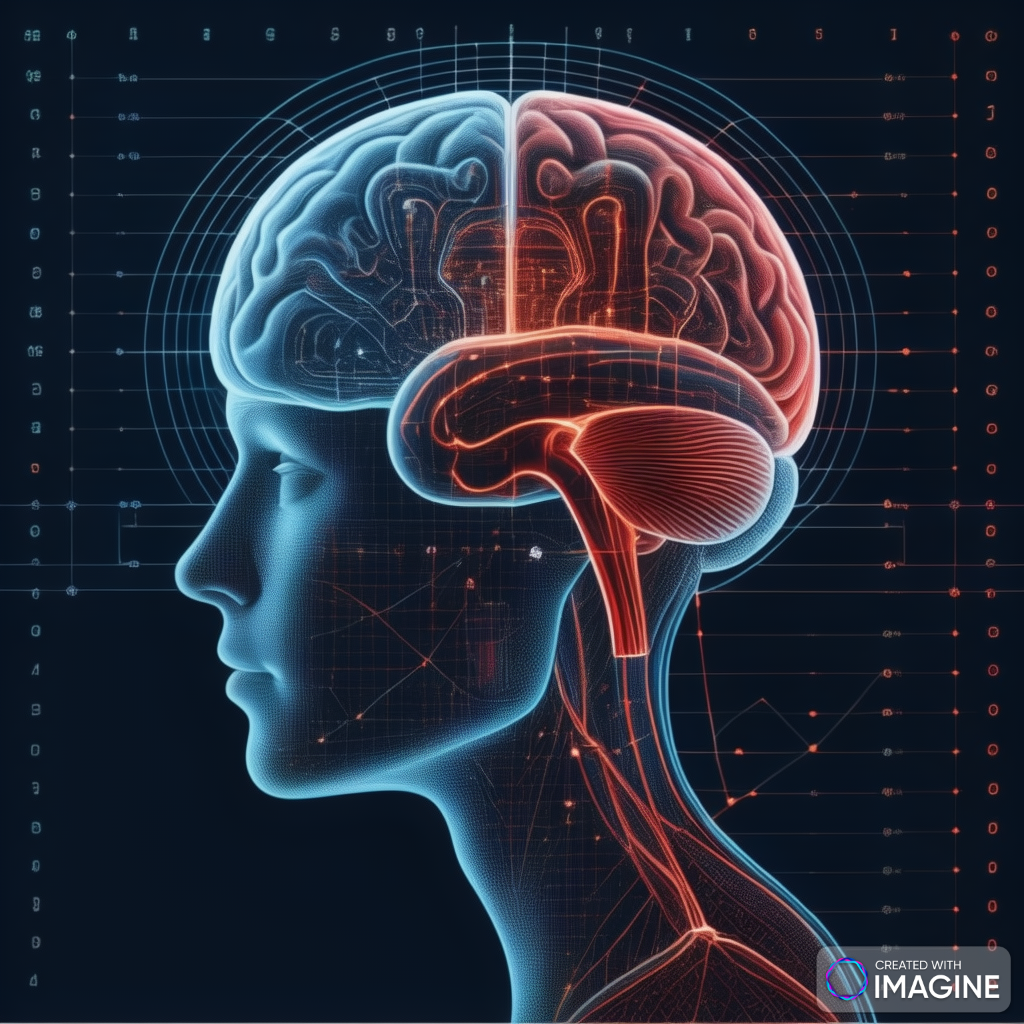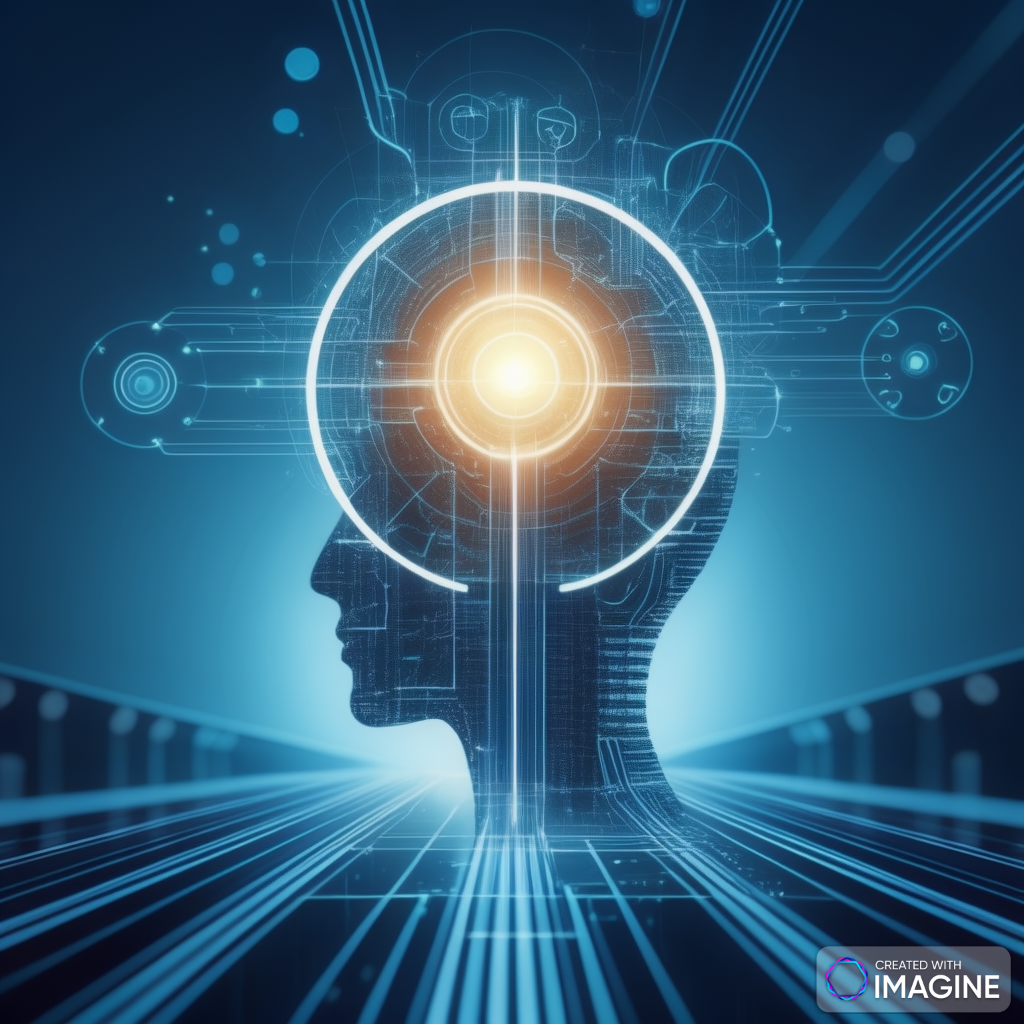Introduction: Brain of human is a marvel of complexity, comprising billions of neurons interconnected in intricate networks. In this blog post, we embark on a journey to explore the fascinating world of brain neuronal structures, unraveling their anatomy, functions, and significance in shaping human cognition and behavior.
Understanding Neurons: Neurons, often referred to as the building blocks of the brain, are specialized cells that transmit information through electrical and chemical signals.
Neurons, the fundamental units of the nervous system, possess a distinctive anatomical structure optimized for transmitting electrical and chemical signals. Here’s a detailed explanation of the key components of a neuron and how they facilitate neuronal communication:
- Dendrites:
- Dendrites are branching extensions protruding from the cell body of a neuron.
- Their primary function is to receive incoming signals from other neurons or sensory receptors.
- Dendrites are covered in specialized structures called dendritic spines, which increase surface area and facilitate synaptic connections.
- These structures play a crucial role in integrating and processing incoming information before transmitting it to the cell body.
- Cell Body (Soma):
- The cell body, or soma, is the central region of the neuron that contains the nucleus and other organelles necessary for cellular function and maintenance.
- It serves as the metabolic center of the neuron, synthesizing proteins and other molecules required for neuronal function and signaling.
- The cell body also integrates incoming signals from dendrites and determines whether to generate an action potential, the electrical impulse that propagates along the axon.
- Axon:
- The axon is a long, slender projection that extends from the cell body and conducts electrical impulses away from the neuron.
- Its main function is to transmit action potentials, or nerve impulses, to other neurons, muscles, or glands.
- Axons are insulated by a myelin sheath, a fatty substance produced by specialized glial cells called oligodendrocytes in the central nervous system and Schwann cells in the peripheral nervous system.
- Myelin enhances the speed and efficiency of signal transmission along the axon by facilitating saltatory conduction, where the action potential jumps from one node of Ranvier to the next.
- Synapses:
- Synapses are specialized junctions between neurons where communication occurs.
- They consist of three main components: the presynaptic terminal (axon terminal) of the transmitting neuron, the postsynaptic membrane of the receiving neuron, and the synaptic cleft between them.
- Neurotransmitters, chemical messengers stored in synaptic vesicles within the presynaptic terminal, are released into the synaptic cleft in response to an action potential.
- These neurotransmitters bind to receptor proteins on the postsynaptic membrane, generating electrical signals (excitatory or inhibitory postsynaptic potentials) that influence the likelihood of an action potential being generated in the postsynaptic neuron.
Overall, the intricate architecture of neurons, including dendrites, cell bodies, axons, and synapses, enables them to receive, process, and transmit information throughout the nervous system, forming the basis of neuronal communication and information processing.
Types of Neurons:
Neurons, the basic functional units of the nervous system, exhibit remarkable diversity in structure and function. Understanding the different types of neurons is essential for comprehending the complexity of neural networks and their roles in information processing within the brain.
- Sensory Neurons:
- Sensory neurons, also known as afferent neurons, are specialized to detect external stimuli from the environment or internal stimuli from the body.
- These neurons have specialized receptor structures, such as in the skin for touch, taste buds for taste, and photoreceptors in the eyes for vision.
- Upon receiving sensory input, these neurons convert the stimulus into electrical signals, known as action potentials, which are transmitted to the central nervous system (CNS) for further processing.
- Sensory neurons play a crucial role in providing information about the external world and the body’s internal state, enabling perception and sensory experiences.
- Motor Neurons:
- Motor neurons, or efferent neurons, are responsible for transmitting signals from the CNS to muscles and glands, initiating motor responses.
- These neurons receive instructions from other neurons within the CNS and relay them to muscles, leading to movements or glandular secretions.
- Motor neurons are characterized by long axons that extend from the CNS to the target muscle or gland, allowing for rapid transmission of signals over long distances.
- Motor neurons are essential for controlling voluntary movements, such as walking and reaching, as well as involuntary actions like heartbeat and digestion.
- Interneurons:
- Interneurons, also known as association neurons, are the most abundant type of neurons in the nervous system.
- These neurons form intricate connections within the CNS, acting as intermediaries between sensory and motor neurons.
- Interneurons integrate signals from sensory neurons and other interneurons, process the information, and relay signals to motor neurons or other interneurons.
- Interneurons play a critical role in modulating and coordinating neural activity, enabling complex behaviors and cognitive functions.
- Unlike sensory and motor neurons, which have distinct anatomical features and functions, interneurons exhibit a wide variety of morphologies and synaptic connections, allowing for diverse roles in neural circuits.
Overall, the diversity of neuron types reflects the complexity of neural networks and their ability to process, integrate, and transmit information throughout the nervous system. Each type of neuron contributes uniquely to the intricate web of connections that underlie perception, cognition, and behavior.
Neuronal Networks:
Neurons communicate with each other through specialized junctions called synapses, forming intricate networks known as neural circuits. These circuits enable complex information processing and integration, allowing the brain to execute various functions and behaviors.
- Synaptic Connections:
- Synapses are junctions between neurons where information is transmitted from one neuron to another.
- At a synapse, the axon terminal of one neuron releases chemical neurotransmitters into the synaptic cleft, a small gap between the presynaptic and postsynaptic neurons.
- Neurotransmitters bind to receptor molecules on the postsynaptic neuron’s dendrites or cell body, triggering changes in its membrane potential.
- Depending on the type and amount of neurotransmitters released, synapses can either excite or inhibit the postsynaptic neuron, modulating its activity.
- Synaptic connections are dynamic and can undergo plasticity, meaning they can strengthen or weaken over time in response to activity and experience.
- Neural Circuits:
- Neural circuits are interconnected networks of neurons that process and transmit information within the brain and spinal cord.
- These circuits consist of multiple neurons organized into functional units, each serving specific roles in information processing.
- Different types of neural circuits are responsible for various functions, such as sensory perception, motor control, memory formation, and emotional regulation.
- Neural circuits are characterized by recurrent loops and feedback mechanisms, allowing for complex interactions and information flow between different brain regions.
- The organization of neural circuits reflects the hierarchical structure of the nervous system, with simple reflex circuits at the spinal cord level and highly complex circuits in the cerebral cortex.
- Brain Regions and Communication:
- The brain is divided into distinct regions, each specializing in specific functions, such as vision, language, movement, and emotion.
- Neural circuits within these brain regions communicate with each other through long-range connections, formed by axonal projections that extend across multiple brain areas.
- Communication between brain regions occurs through white matter tracts, bundles of axons that transmit signals over long distances.
- These connections enable coordinated activity between different brain regions, allowing for integrated processing and the orchestration of complex behaviors.
- Disruptions in communication between brain regions can lead to neurological disorders and cognitive impairments, highlighting the importance of intact neural circuits for brain function.
Overall, neural circuits and synaptic connections form the structural basis of information processing in the brain, enabling the integration of sensory inputs, generation of motor outputs, and execution of higher cognitive functions. Understanding the organization and dynamics of neural circuits is crucial for unraveling the mysteries of brain function and dysfunction.
Brain Regions and Functions:
The human brain is a marvelously complex organ composed of various regions, each with specialized functions crucial for different aspects of cognition, behavior, and physiological regulation. Here, we delve into some key brain regions and their roles in essential processes such as memory, learning, emotion regulation, and motor control:
- Cerebral Cortex:
- The cerebral cortex is the outermost layer of the brain and is highly folded to increase its surface area. It is divided into four lobes: frontal, parietal, temporal, and occipital.
- Frontal Lobe: Responsible for higher cognitive functions such as decision-making, planning, problem-solving, and voluntary movement. It also houses the primary motor cortex, which controls voluntary movements of specific body parts.
- Parietal Lobe: Processes sensory information from the body, including touch, temperature, and pain. It also plays a role in spatial perception and attention.
- Temporal Lobe: Involved in auditory processing, language comprehension, memory formation, and emotion regulation. It contains structures like the hippocampus and amygdala, vital for memory and emotion.
- Occipital Lobe: Primarily responsible for processing visual information received from the eyes, allowing for visual perception and object recognition.
- Hippocampus:
- The hippocampus is located within the temporal lobe and is crucial for the formation of new memories, particularly episodic and spatial memories.
- It acts as a gateway for memory consolidation, integrating information from various brain regions to form cohesive memories that can be stored and retrieved later.
- The hippocampus is also involved in spatial navigation, helping individuals navigate and remember spatial environments.
- Amygdala:
- The amygdala, situated deep within the temporal lobe, plays a central role in processing emotions, particularly fear and aggression.
- It is involved in the formation and retrieval of emotional memories, as well as the regulation of emotional responses to stimuli.
- The amygdala also interacts with other brain regions to modulate physiological responses associated with emotions, such as changes in heart rate, breathing, and hormone release.
- Basal Ganglia:
- The basal ganglia are a group of interconnected structures located deep within the brain, involved in motor control, habit formation, and reward processing.
- They help initiate and regulate voluntary movements, as well as coordinate muscle activity to ensure smooth and precise motor control.
- Dysfunction of the basal ganglia can lead to movement disorders such as Parkinson’s disease and Huntington’s disease.
- Cerebellum:
- The cerebellum, located at the back of the brain, is essential for coordinating voluntary movements, maintaining balance, and motor learning.
- It receives input from the sensory systems and the cerebral cortex to fine-tune motor movements and ensure their accuracy and precision.
Understanding the specialized functions of different brain regions provides insights into the neural basis of various cognitive and behavioral processes. Each region contributes uniquely to overall brain function, highlighting the intricacies of the human brain’s organization and operation.
Plasticity and Adaptation:
Neuroplasticity, also known as brain plasticity, refers to the brain’s remarkable ability to reorganize its neuronal structures, connections, and functions in response to experiences, learning, and environmental stimuli. This dynamic process underlies our capacity to adapt to new challenges, acquire new skills, and recover from brain injuries. Here, we delve into the mechanisms of neuroplasticity and its implications for brain health and rehabilitation:
- Synaptic Plasticity:
- Synaptic plasticity refers to changes in the strength and efficacy of synaptic connections between neurons. It is crucial for learning and memory processes.
- Long-term potentiation (LTP) and long-term depression (LTD) are two forms of synaptic plasticity that involve the strengthening or weakening of synaptic connections, respectively.
- LTP is often associated with learning and the formation of new memories, while LTD may be involved in forgetting or pruning unnecessary connections.
- Structural Plasticity:
- Structural plasticity involves changes in the physical structure of neurons, including dendritic branching, axonal sprouting, and the formation of new synaptic connections.
- Neurogenesis, the birth of new neurons, occurs primarily in regions such as the hippocampus and olfactory bulb throughout life, contributing to brain repair and learning.
- Dendritic spines, small protrusions on dendrites where synapses form, can undergo rapid changes in response to experience, impacting synaptic connectivity and information processing.
- Functional Plasticity:
- Functional plasticity refers to the brain’s ability to redistribute functions across different brain regions in response to damage or changes in sensory input.
- After injury or during recovery from stroke, unaffected brain regions may assume the functions of damaged areas through mechanisms such as axonal sprouting and cortical remapping.
- Functional plasticity is also evident in cases of sensory deprivation or skill acquisition, where the brain reallocates resources to enhance performance in specific tasks or sensory modalities.
Implications for Brain Health and Rehabilitation:
- Understanding neuroplasticity has profound implications for brain health and rehabilitation strategies.
- Rehabilitation interventions, such as physical therapy, cognitive training, and occupational therapy, leverage neuroplasticity to promote recovery after brain injuries or neurological disorders.
- Environmental enrichment, sensory stimulation, and social interactions can enhance neuroplasticity and support cognitive function and emotional well-being throughout life.
- Pharmacological interventions and neuromodulation techniques, such as transcranial magnetic stimulation (TMS) and transcranial direct current stimulation (tDCS), may also modulate neuroplasticity to treat neurological and psychiatric conditions.
In summary, neuroplasticity represents the brain’s remarkable ability to adapt and rewire itself in response to experiences and environmental changes. By harnessing the mechanisms of neuroplasticity, we can develop novel approaches to promote brain health, enhance learning and memory, and facilitate recovery from brain injuries and neurological disorders.
Disorders and Dysfunctions:
Disruptions in neuronal structures can have profound implications for neurological function, leading to a wide range of disorders and cognitive dysfunctions. Here, we explore how abnormalities in neuronal anatomy and function contribute to various neurological and psychiatric conditions:
- Alzheimer’s Disease:
- In Alzheimer’s disease, the accumulation of beta-amyloid plaques and tau protein tangles disrupts neuronal communication and leads to widespread neuronal death.
- These pathological changes primarily affect brain regions involved in memory, such as the hippocampus and cortical association areas, leading to progressive cognitive decline and memory loss.
- Parkinson’s Disease:
- Parkinson’s disease is characterized by the degeneration of dopamine-producing neurons in the substantia nigra, leading to motor symptoms such as tremors, rigidity, and bradykinesia.
- Dopamine depletion disrupts the basal ganglia circuitry, impairing motor control and coordination.
- Schizophrenia:
- Schizophrenia is associated with abnormalities in neuronal connectivity and neurotransmitter systems, particularly dopamine and glutamate.
- Disruptions in cortical circuitry, including alterations in synaptic pruning and dendritic spine density, contribute to cognitive deficits and psychotic symptoms such as hallucinations and delusions.
- Autism Spectrum Disorder (ASD):
- ASD is characterized by atypical brain development, including alterations in neuronal migration, synaptic connectivity, and neurotransmitter signaling.
- Abnormalities in cortical minicolumn organization, white matter connectivity, and functional brain networks contribute to social communication deficits and repetitive behaviors in individuals with ASD.
- Epilepsy:
- Epilepsy is characterized by recurrent seizures resulting from abnormal neuronal firing patterns and synchronous electrical activity in the brain.
- Disruptions in ion channel function, neurotransmitter imbalance, and structural abnormalities such as cortical malformations can predispose individuals to epileptic seizures.
- Traumatic Brain Injury (TBI):
- TBI can result in focal or diffuse damage to neuronal structures, leading to cognitive impairments, motor deficits, and emotional disturbances.
- Axonal injury, neuronal loss, and neuroinflammation contribute to long-term neurological deficits and cognitive dysfunction following TBI.
- Mood Disorders:
- Mood disorders such as depression and bipolar disorder are associated with alterations in neuronal plasticity, neurotransmitter function, and neuroendocrine signaling.
- Dysregulation of monoaminergic systems, including serotonin, norepinephrine, and dopamine, contributes to mood instability and affective symptoms.
Understanding the role of neuronal disruptions in neurological and psychiatric disorders is essential for developing targeted interventions and treatments. By elucidating the underlying mechanisms of these conditions, researchers can identify novel therapeutic targets and interventions to improve outcomes for individuals affected by these disorders.
Research and Innovations:
Staying updated on the latest advancements in neuroscience research is crucial for understanding brain neuronal structures and their implications for health and disease. Here’s a detailed exploration of how cutting-edge techniques such as optogenetics, connectomics, and brain imaging technologies are revolutionizing our understanding:
- Optogenetics:
- Optogenetics is a groundbreaking technique that enables researchers to control the activity of specific neurons using light-sensitive proteins called opsins.
- By introducing these opsins into neurons using viral vectors or genetic engineering, researchers can selectively activate or inhibit neuronal activity with precise spatial and temporal resolution.
- Optogenetics has transformed neuroscience research by allowing scientists to dissect the neural circuits underlying behavior, memory, and disease states.
- Researchers can use optogenetics to manipulate neuronal activity in animal models of neurological and psychiatric disorders, providing insights into disease mechanisms and potential therapeutic targets.
- Connectomics:
- Connectomics is the study of the brain’s wiring diagram, mapping the complex network of connections between neurons at the level of individual synapses.
- Advances in electron microscopy and computational imaging techniques have enabled researchers to reconstruct neuronal circuits with unprecedented detail and scale.
- Connectomics research aims to unravel the organizational principles of brain networks, understand how information is processed and transmitted, and uncover the neural basis of behavior and cognition.
- By mapping neuronal connectivity in healthy and diseased brains, connectomics offers insights into the mechanisms underlying neurological disorders and may guide the development of targeted interventions.
- Brain Imaging Technologies:
- Brain imaging technologies, such as functional magnetic resonance imaging (fMRI), positron emission tomography (PET), and electroencephalography (EEG), allow researchers to visualize brain activity in vivo.
- fMRI measures changes in blood flow and oxygenation associated with neural activity, providing detailed maps of brain regions involved in specific tasks or cognitive processes.
- PET imaging enables the visualization of neurotransmitter systems and molecular markers of disease pathology, offering valuable diagnostic and prognostic information.
- EEG records electrical activity from the scalp, capturing the dynamics of neuronal firing patterns with high temporal resolution.
- Advanced imaging techniques, such as diffusion tensor imaging (DTI) and resting-state fMRI, provide insights into structural and functional connectivity patterns in the brain, revealing alterations associated with neurological disorders.
By leveraging these cutting-edge techniques, researchers can unravel the complexities of brain neuronal structures, elucidate their role in health and disease, and pave the way for innovative diagnostic and therapeutic strategies. Stay updated on the latest developments in neuroscience to contribute to the ongoing quest to unlock the mysteries of the brain.
latest advancements in neuroscience research:
- Two-Photon Microscopy:
- Two-photon microscopy is a powerful imaging technique that allows researchers to visualize neuronal structures and activity with high spatial resolution deep within living brain tissue.
- By using two-photon excitation, this method minimizes light scattering and tissue damage, enabling researchers to study neuronal dynamics in intact neural circuits.
- Two-photon microscopy has been instrumental in uncovering the dynamics of dendritic spines, synaptic plasticity, and neuronal firing patterns in both healthy and diseased brains.
- This technique holds promise for studying the mechanisms of neurodegenerative diseases, such as Alzheimer’s and Parkinson’s, by monitoring changes in neuronal structure and function over time.
- Single-Cell Transcriptomics:
- Single-cell transcriptomics is a cutting-edge technology that allows researchers to analyze the gene expression profiles of individual neurons at unprecedented resolution.
- By sequencing the RNA transcripts from single cells, researchers can identify distinct cell types, characterize gene regulatory networks, and uncover molecular signatures associated with neuronal identity and function.
- Single-cell transcriptomics has revealed remarkable heterogeneity among neurons within the same brain region, shedding light on the diversity of neuronal subtypes and their contributions to brain function.
- This technique has broad applications in neuroscience, from understanding the development and maturation of neuronal circuits to unraveling the molecular mechanisms underlying neurological disorders.
- In Vivo Electrophysiology:
- In vivo electrophysiology techniques, such as multi-electrode array recordings and patch-clamp electrophysiology, enable researchers to directly measure the electrical activity of neurons in awake, behaving animals.
- These methods provide detailed insights into the spatiotemporal patterns of neuronal firing, synaptic transmission, and network dynamics underlying cognitive processes and behavior.
- In vivo electrophysiology has been instrumental in elucidating the neural mechanisms of learning and memory, sensory processing, decision-making, and motor control.
- By combining electrophysiological recordings with optogenetic or pharmacological manipulations, researchers can causally link neuronal activity patterns to specific behaviors and neural circuits.
- Advanced Data Analysis Techniques:
- With the increasing complexity and volume of neuroscience data, advanced data analysis techniques, such as machine learning, deep learning, and network modeling, are becoming essential tools for extracting meaningful insights.
- Machine learning algorithms can classify neuronal cell types, predict neuronal responses to stimuli, and identify patterns in large-scale neural datasets.
- Deep learning approaches, such as convolutional neural networks (CNNs) and recurrent neural networks (RNNs), enable the automated analysis of brain images, such as histological sections and functional brain scans.
- Network modeling techniques, such as graph theory and dynamical systems analysis, help uncover the organizational principles of brain networks and predict their emergent properties.
By harnessing these advanced techniques and methodologies, neuroscientists can deepen our understanding of brain neuronal structures and functions, paving the way for transformative discoveries in neuroscience and clinical applications.
- Nanotechnology in Neuroscience:
- Nanotechnology has opened new frontiers in neuroscience by offering tools for precise manipulation and observation of neuronal structures at the nanoscale.
- Nanomaterials, such as quantum dots, carbon nanotubes, and nanoparticles, can be engineered to interact with neurons and neural circuits, enabling targeted drug delivery, neural stimulation, and sensing.
- Nano-enabled devices, such as nanowire electrodes and nanoscale imaging probes, allow for minimally invasive monitoring of neuronal activity with high spatial and temporal resolution.
- The integration of nanotechnology with neuroscience holds promise for developing next-generation neural interfaces, neural implants, and diagnostic tools for neurological disorders.
- Brain-Computer Interfaces (BCIs):
- BCIs are innovative technologies that establish direct communication pathways between the brain and external devices, enabling individuals to control computers, prosthetic limbs, or assistive technologies using their thoughts.
- Electroencephalography (EEG), functional near-infrared spectroscopy (fNIRS), and intracortical electrodes are common techniques used in BCIs to record brain signals and decode user intentions.
- BCIs have transformative potential in restoring motor function for individuals with paralysis, enhancing cognitive abilities, and facilitating neurorehabilitation.
- Ongoing research in BCIs focuses on improving signal processing algorithms, enhancing the longevity and biocompatibility of neural implants, and expanding the applications of BCIs in healthcare, gaming, and human-computer interaction.
- Brain Organoids and 3D Brain Models:
- Brain organoids are miniature, three-dimensional models of the human brain derived from stem cells, allowing researchers to study brain development, disease modeling, and drug screening in a controlled laboratory setting.
- Organoids mimic the cellular organization and functionality of the developing
 , enabling investigations into neurogenesis, neuronal migration, and the formation of neural circuits.
, enabling investigations into neurogenesis, neuronal migration, and the formation of neural circuits. - Advanced techniques, such as bioengineering, microfluidics, and organ-on-a-chip technology, are used to create more sophisticated brain organoid models with increased complexity and functionality.
- Brain organoids hold promise for understanding neurodevelopmental disorders, such as autism and microcephaly, and for developing personalized medicine approaches for neurological conditions.
- Optogenetics and Chemogenetics:
- Optogenetics and chemogenetics are innovative techniques that enable precise control of neuronal activity using light or synthetic molecules, respectively.
- Optogenetic tools, such as channelrhodopsins and halorhodopsins, allow researchers to activate or inhibit specific neurons with millisecond precision using light stimulation.
- Chemogenetic approaches, such as designer receptors exclusively activated by designer drugs (DREADDs), enable remote manipulation of neuronal activity through the administration of engineered ligands.
- These techniques have revolutionized neuroscience research by providing insights into the causal relationship between neuronal activity patterns and behavior, as well as potential therapeutic avenues for neurological and psychiatric disorders.
By incorporating these cutting-edge methodologies into their research, neuroscientists are advancing our understanding of brain structure and function and paving the way for innovative solutions to complex neurological challenges.
Conclusion: In conclusion, the study of brain neuronal structures offers profound insights into the inner workings of the human brain. By understanding the anatomy, functions, and plasticity of neurons, we gain a deeper appreciation for the complexity and adaptability of the brain, paving the way for advancements in neuroscience and improved treatments for neurological disorders.







